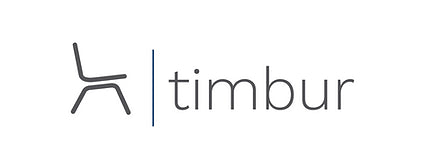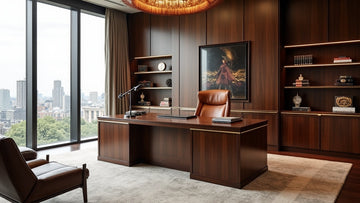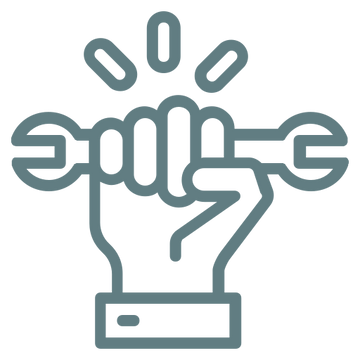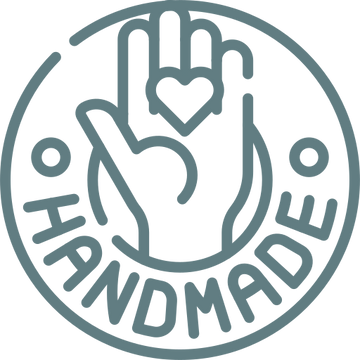Office design choices for executives mix classic power features with modern elegance. Big corner desks, high-end leather chairs, and solid wood furniture show status, while good lighting and warm colors make the space both welcoming and business-like. Displaying achievements and placing screens and devices carefully adds to the leader’s image. Smart room layout brings in sunlight and helps the executive control their space. These design choices show how to balance looking powerful with being a modern leader.
Key Takeaways
- Large L-shaped desks positioned to maximize room control and sunlight establish dominance while maintaining functionality and professionalism.
- Dark wood furniture combined with neutral wall colors and bold accents creates an atmosphere of sophistication and executive presence.
- Strategic placement of awards and achievements on visible walls builds credibility while reinforcing leadership status.
- High-end ergonomic seating, particularly an impressive executive chair, demonstrates authority while ensuring comfort during extended meetings.
- Natural lighting from expansive windows paired with warm artificial lighting enhances the space’s grandeur and creates an inviting atmosphere.
The Psychology Behind Authority-Driven Office Design
Office design has changed a lot over time, but the way we set up spaces for leaders still follows basic rules about power and how people think.
Today’s executive offices mix old signs of authority like big desks and tall chairs with newer touches that show modern ways of leading.
The way an office is set up affects how people feel and think through careful choices in design. Leaders often pick warm colors to seem both friendly and serious, place furniture to make the best use of sunlight and room control, and display their awards in ways that build trust.
Modern leadership shows through simple, clean design where smooth surfaces and new technology create a space that shows both skill and flexibility - things that matter a lot in today’s fast-changing business world.

Essential Furniture Elements That Command Respect
A powerful executive office starts with the right furniture, where each piece shows leadership and good business sense. The main desk, often L-shaped and covered in textured leather patterns, makes a strong statement while being highly useful.
The matching boss’s chair has soft leather that breathes well and supports good posture, looking impressive while keeping you comfortable all day.
Dark coffee tables and nice seating areas fit perfectly into the space, making it good for both solo work and team meetings.
Well-finished wood pieces throughout the office show strength, and top-quality materials prove nothing has been overlooked.
When put together, these furniture pieces create a space that naturally earns respect while staying practical and stylish.
Thoughtful space arrangement contributes to a harmonious workspace that maximizes efficiency and improves workflow for executives.
Strategic Use of Color and Lighting for Impact
Colors and lighting work together to make an executive office more powerful and effective. The best approach starts with basic, neutral colors as the main backdrop, with strong colors like deep blue or dark red added to show leadership and class.
Lighting is just as important as color. Big windows letting in daylight help create an open and lively feel, while well-placed work lights help get things done. Soft, warm lighting makes the office feel both friendly and professional, and desk lamps that can be adjusted help with detailed work.
Smart color choices help build a leader’s presence - blue shades help people feel calm and trusting, while bright touches here and there add energy to the room.
When colors and lighting are balanced this way, they turn the office into a space that shows true executive power.
Balancing Modern Technology With Classic Appeal
Modern technology and classic design can work together to create an office that feels both current and traditional. Putting new devices next to timeless features makes a workspace that’s both useful and impressive. A well-balanced executive office should include designated quiet areas for focused work that requires concentration and privacy.
|
Design Element |
Integration Strategy |
|
Smart Lighting |
Mix with good-looking light fixtures |
|
Interactive Displays |
Place next to wooden wall panels |
|
Video Conference Systems |
Hide within classic room features |
|
Ergonomic Furniture |
Choose clean, modern designs |
|
Modular Solutions |
Fit with current office look |
When new technology meets classic design, it creates an office that shows strong leadership. Using comfortable furniture with clean lines and pieces that can be moved around helps make the space flexible while keeping it professional. This mix of old and new keeps the office looking fresh while staying true to its formal roots.
Space Planning Principles for Executive Presence
Planning an executive office requires smart use of space to create a strong leadership feel while staying welcoming. Good furniture placement and open design help balance authority with friendliness, while quality materials show professionalism.
- Include small meeting tables for private talks and teamwork without leaving the main office space.
- Set up the desk and chairs with comfort in mind to work well and show confidence.
- Keep walking paths clear and tidy to show good organization and leadership.
- Use lasting, high-end materials like real wood and leather to give the office weight and importance.
Position your desk near natural light sources to increase alertness and create an inviting atmosphere for visiting clients.
Good office planning goes beyond just where to put furniture. It creates a space that quietly shows leadership while making it easy for people to work together and get things done.
Materials and Finishes That Exude Sophistication
Choosing the right materials and finishes for an executive office can turn a basic workspace into an impressive one. Quality materials like smooth wood, fine leather, and clean metal details create a high-end, powerful look. Adding different textures and natural materials helps build a complete design that shows success.
|
Material |
What It Adds |
|
Smooth Wood |
Classic beauty |
|
Fine Leather |
Business class look |
|
Clean Metal |
New-age strength |
|
Natural Stone |
Earth-based luxury |
|
Textured Fabrics |
Rich feel |
Mixing different finishes, from flat surfaces to shiny spots, adds depth while keeping things professional. Using these materials carefully shows good planning and style, making a space that both demands respect and stays comfortable to work in.
Personal Branding Through Office Aesthetics
An office shows who you are as a leader and what you value through its design and setup. The way you arrange your workspace helps create a clear image that connects with everyone who visits or works with you.
- Displaying work achievements like awards and certificates shows your skills and helps others trust your leadership.
- Choosing good furniture and decorations with quality materials and matching colors builds a strong leadership presence and shows what your company stands for.
- Using new technology shows you’re up-to-date and efficient, marking you as a modern leader.
- Adding personal items like artwork and meaningful decorations creates a special feel that helps people connect with you while keeping things professional.
Incorporating durable materials like oak or maple in your office bookcases enhances both aesthetic appeal and conveys a commitment to quality that reflects on your leadership style.
When all these parts work together, they build a strong work identity in your office space.
Creating Powerful Meeting and Collaboration Zones
Meeting and teamwork spaces in executive offices help bring out the best ideas and team spirit. Good meeting areas use smart design choices to help people work better together. Round tables help everyone feel equal and included, while comfortable chairs and bright spaces make it easier for people to relax and share ideas.
Modern tools like digital screens and video calls make these spaces better for working together, no matter where team members are located. Having both regular meeting rooms and casual spots for quick chats gives teams different ways to work together.
Sunlight helps too - it makes people feel more awake and creative during meetings. For optimal interaction, arrange seating within L-shaped setups to encourage natural conversation flow among team members. When these spaces are well-designed, they help teams work better and leaders guide more effectively.
Ergonomic Solutions for the Modern Executive
The Modern Executive’s Guide to Comfort at Work
Today’s business leaders need office setups that help them work comfortably and get more done. A well-designed executive office puts health first by using the right furniture and tools that make work easier while keeping a professional look.
- Good office chairs with back support and cool, breathable fabrics work for different body types while looking professional.
- Standing desks that move up and down let people switch positions during the day, helping them sit better and stay focused.
- Smart desk setups with screen holders and keyboard supports create personal spaces that reduce body stress.
- Using comfort-focused office design shows that a company cares about its leaders’ health and work quality.
When an office is set up with comfort in mind, executives can work better and longer while staying healthy and feeling good.
Frequently Asked Questions
What Should an Executive Office Have?
An executive office needs a large, high-quality desk, comfortable chairs, good lighting, tasteful art on the walls, modern tech equipment, well-matched colors, sound-reducing features, smart storage solutions, a space for meetings, and a few carefully chosen personal items.
What Type of Design Is Office Design?
Office design mixes style with practicality to create work-friendly spaces. It brings together company logos and colors, comfortable furniture, and smart room layouts. Designers think about how colors affect mood, pick the right materials, and make sure spaces aren’t too noisy. They also plan lighting and add needed technology to help people work better.
How to Layout an Executive Office?
The best way to set up an executive office starts with careful planning of the space. Place high-quality desks and chairs where windows bring in daylight. Split the room into clear areas for different tasks, like meetings, desk work, and reading. Make sure computers, phones, and other work tools fit neatly into the design. Choose colors that help set the right mood, and plan the space to control noise and create a smooth work setting.
How to Decorate an Executive’s Office?
Office decorating tips for executives focus on choosing high-quality furniture, placing artwork carefully, and using the right lights. Smart color choices help set the right mood, while adding personal items and modern technology creates a welcoming space that shows both leadership style and work skills.
Conclusion
Executive office design requires careful attention to elements that signal leadership while maintaining modern sophistication. Through high-end materials and strategic furniture placement, leaders can create spaces that inspire confidence and professionalism. Timbur specializes in crafting executive office furniture that combines classic authority with contemporary style. When traditional design meets modern technology and comfort, the result is a workspace that naturally conveys power while delivering the refined elegance expected in executive suites.









